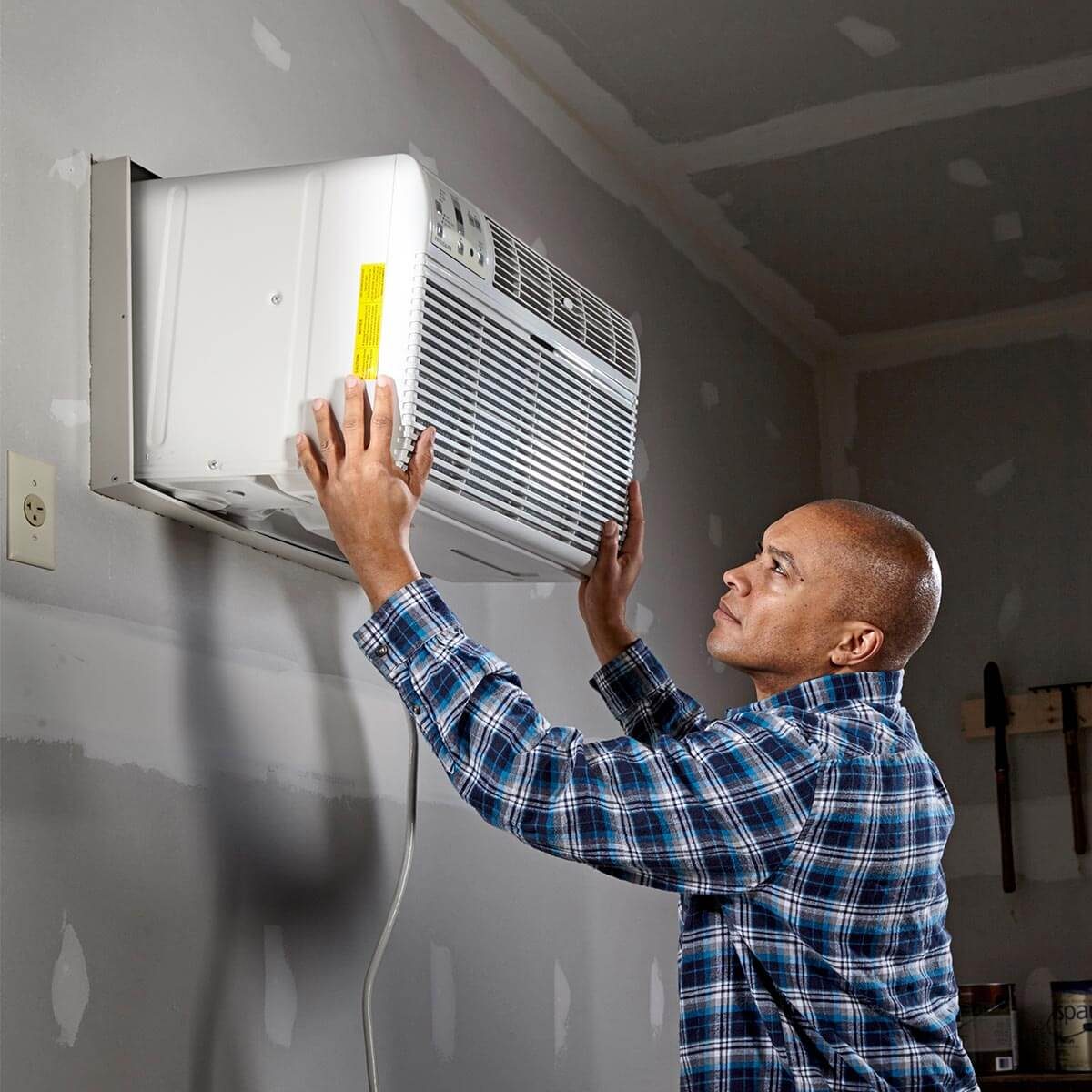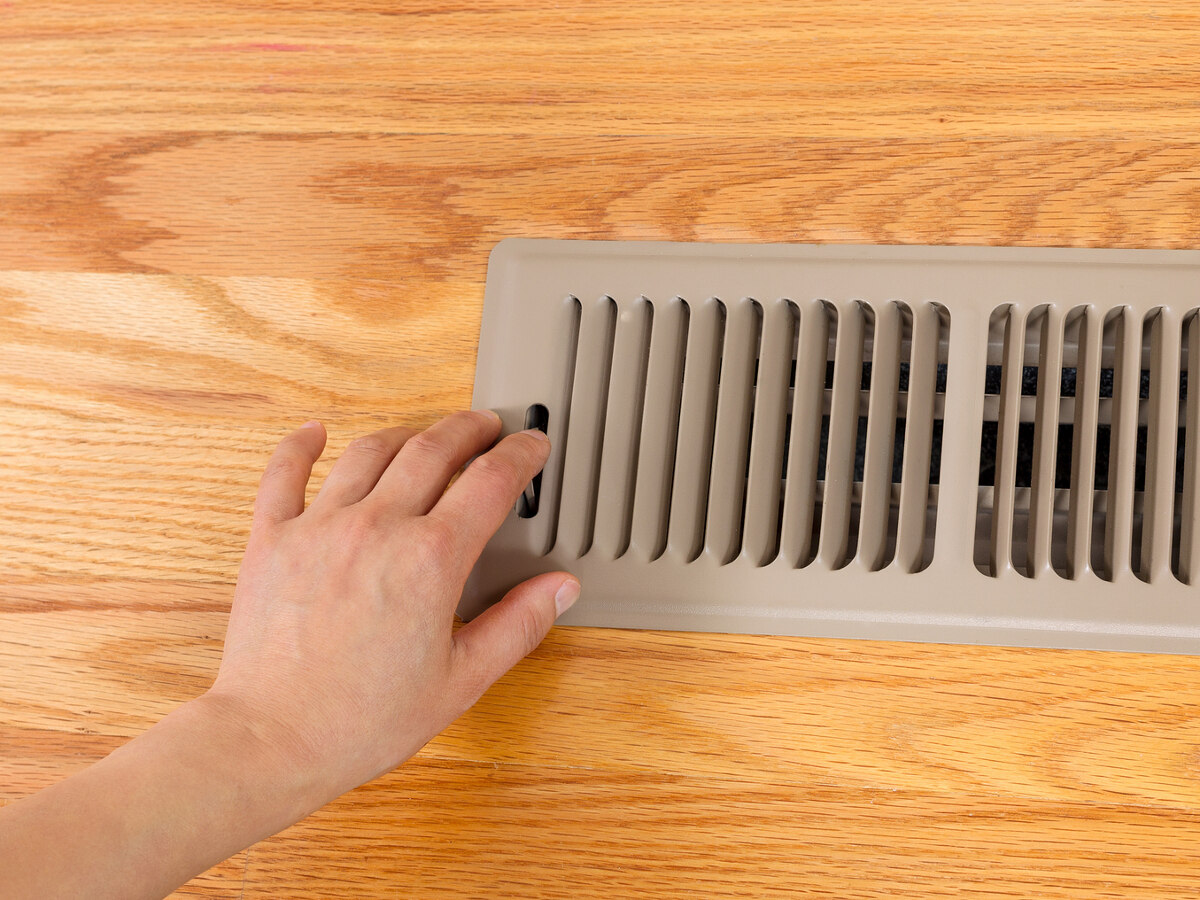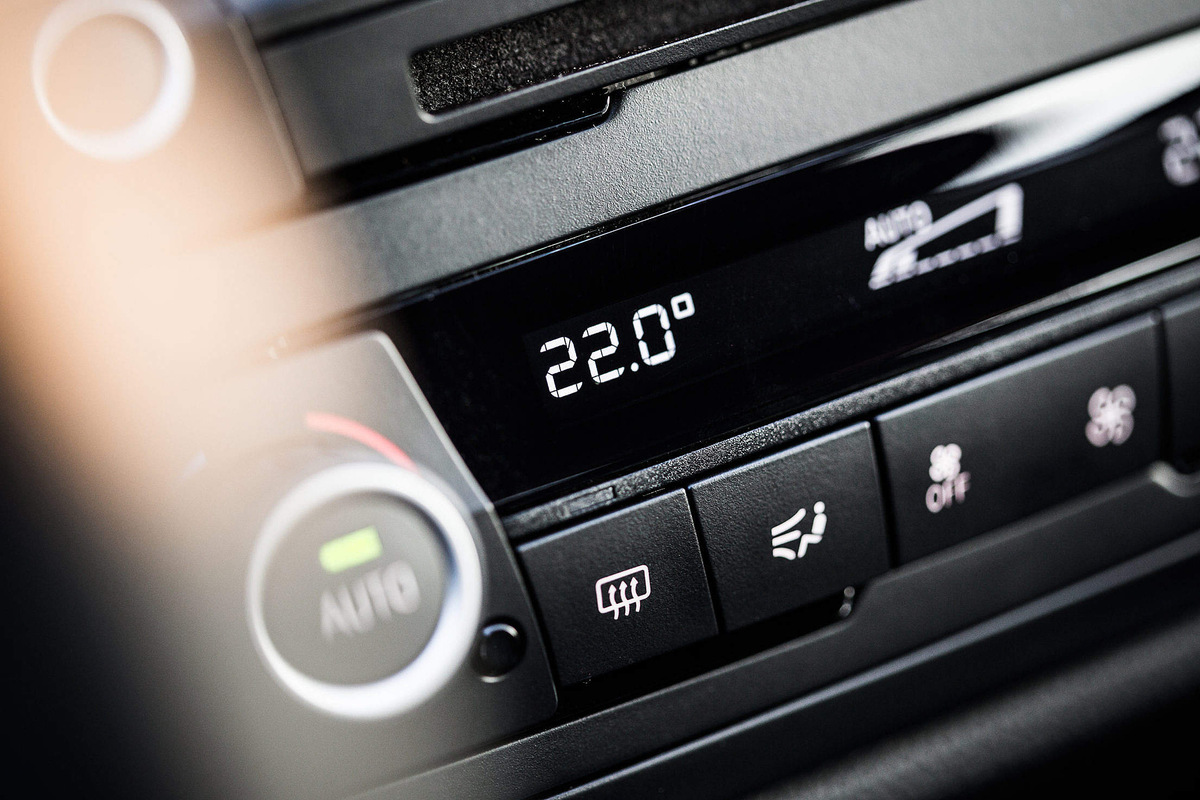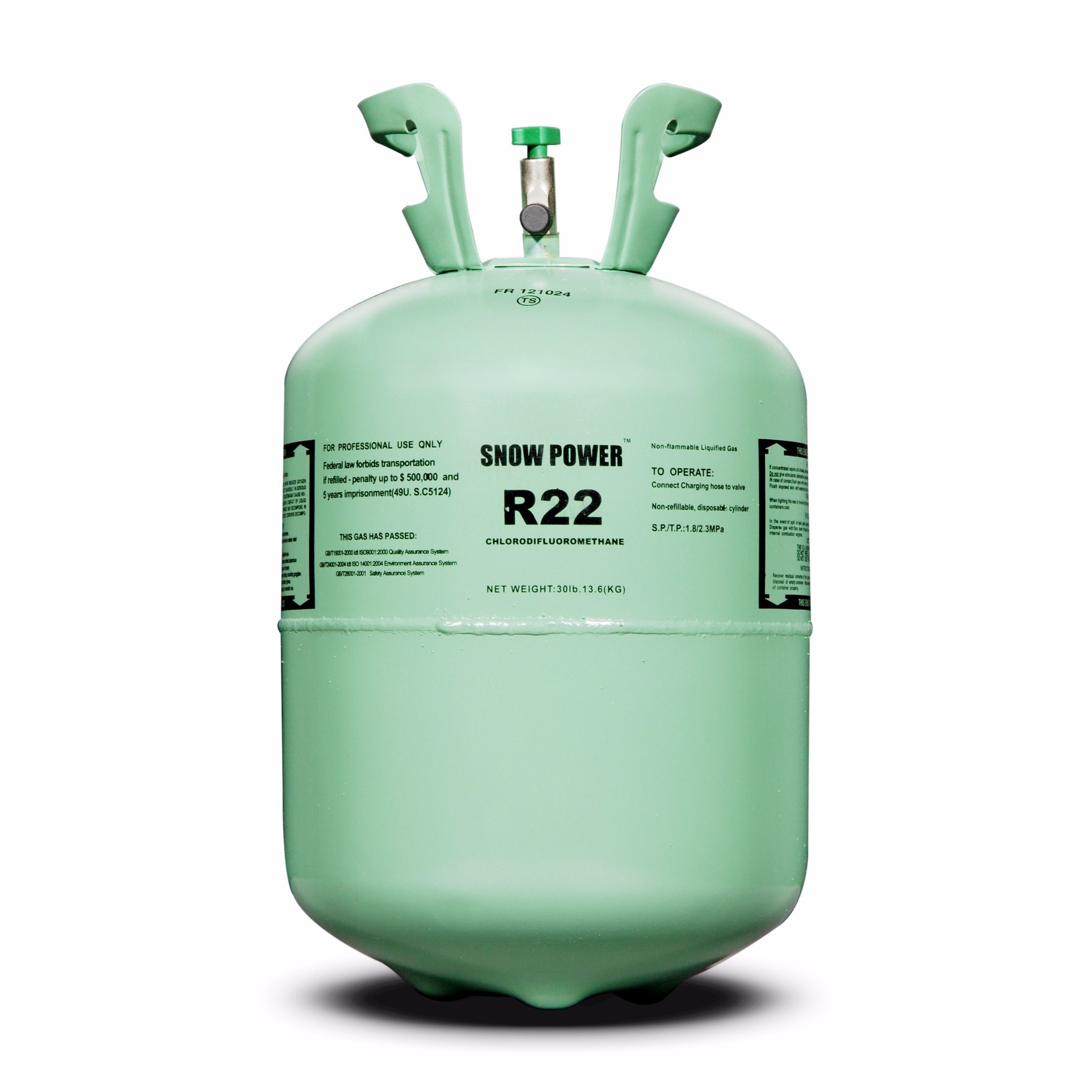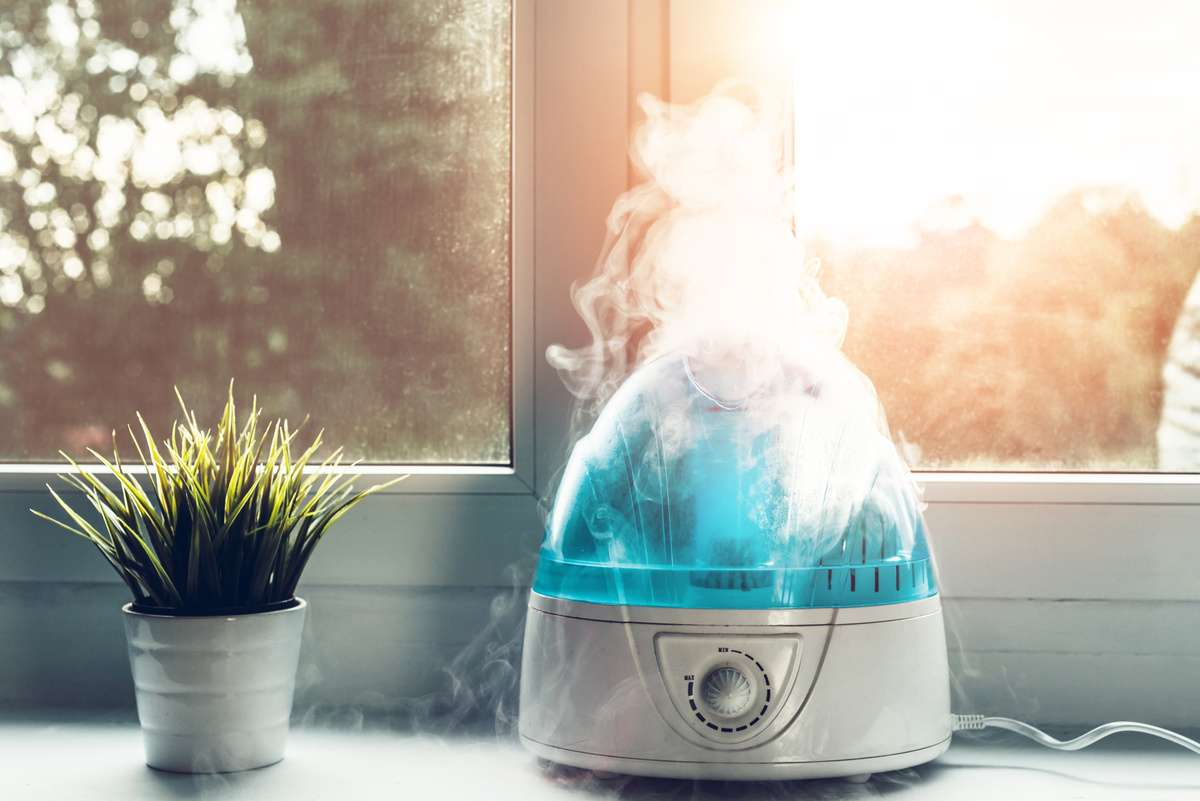Home>Home Maintenance>How To Save On Air Conditioning Bill
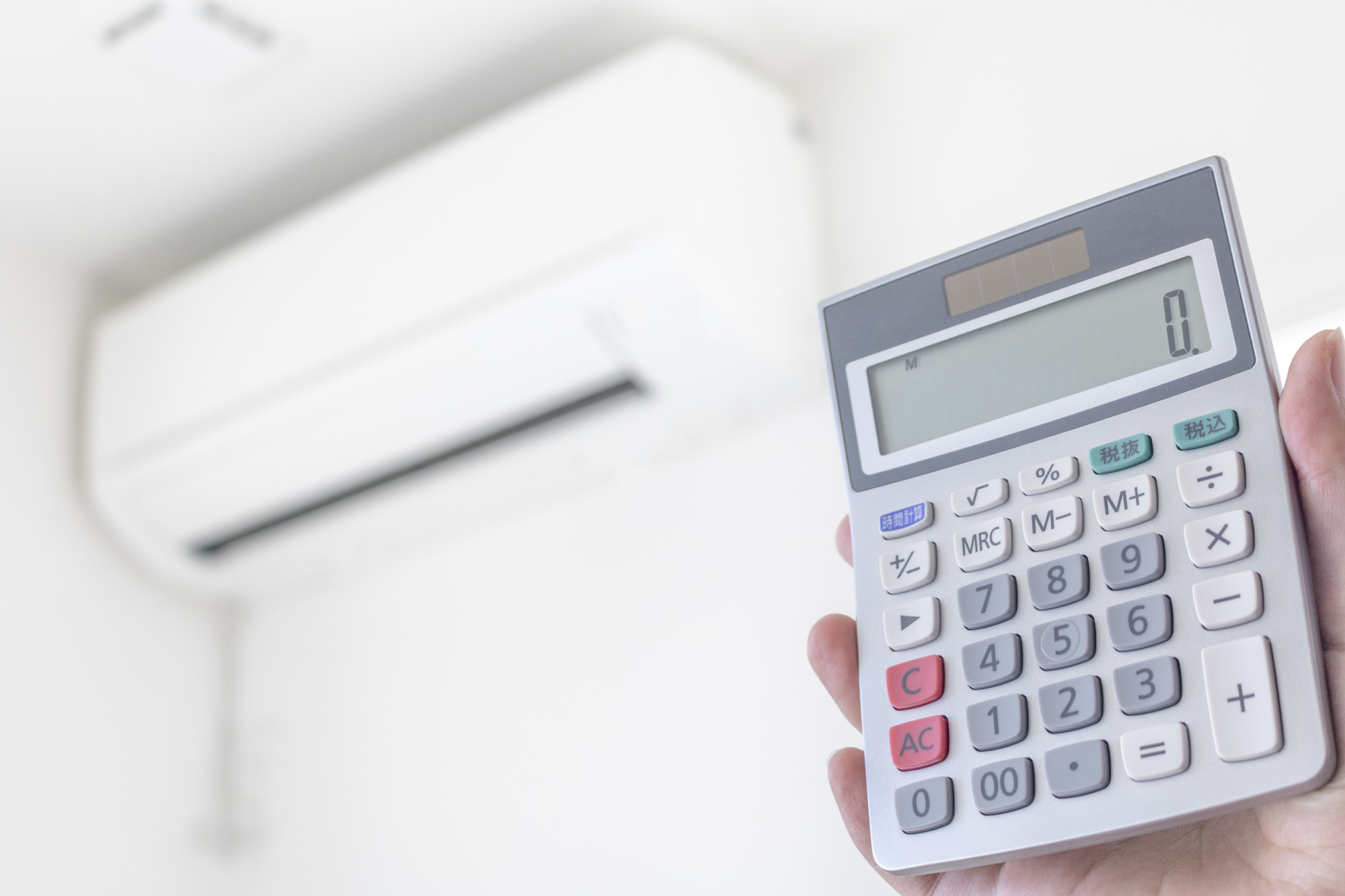

Home Maintenance
How To Save On Air Conditioning Bill
Modified: August 27, 2024
Learn effective home maintenance tips to save money on your air conditioning bill. Implement smart strategies and techniques to keep your home cool without breaking the bank.
(Many of the links in this article redirect to a specific reviewed product. Your purchase of these products through affiliate links helps to generate commission for Storables.com, at no extra cost. Learn more)
Introduction
Welcome to our comprehensive guide on how to save on your air conditioning bill! As the temperatures rise, so does the need to keep our homes cool and comfortable. However, running an air conditioning system can lead to hefty energy bills, putting a strain on our wallets. The good news is that there are several strategies and techniques you can employ to reduce your air conditioning costs without sacrificing your comfort.
In this guide, we will walk you through various steps to help you optimize your air conditioning system’s efficiency and minimize your energy consumption. From understanding how your air conditioning system works to implementing energy-saving practices, we will cover a range of tips and tricks for keeping your home cool while keeping your expenses in check.
Before diving into the strategies, let’s have a quick overview of how air conditioning systems operate and the factors that influence their energy consumption.
Read more: What Utility Bill Covers Air Conditioning?
Understanding Your Air Conditioning System
There are different types of air conditioning systems, including central air conditioners, ductless mini-split systems, window units, and portable units. Each has its own pros and cons, but they all work on the same basic principle of transferring heat from the inside to the outside, creating a cool indoor environment.
Central air conditioners use a network of ducts to distribute cool air throughout the entire home. Ductless mini-split systems, on the other hand, consist of an outdoor unit connected to one or more indoor units, providing cooling to specific zones. Window units are self-contained systems that are mounted on an open window or specifically designed wall opening. Portable units are standalone units that can be easily moved from room to room.
No matter the type of system you have, understanding how it works can help you make informed decisions to improve its efficiency. Air conditioners rely on refrigerants, which absorb heat from the air inside your home and release it outside. This process involves compressing the refrigerant to increase its temperature and then allowing it to expand, which cools it down. The cooled refrigerant absorbs heat from the indoor air, lowering the temperature before circulating it back into your home.
Several factors can affect your air conditioning system’s energy consumption, including the size of your home, the climate you live in, the level of insulation in your home, and your personal cooling preferences. By considering and addressing these factors, you can minimize energy waste and bring down your air conditioning bill.
Key Takeaways:
- Understanding your air conditioning system and implementing energy-saving practices, such as insulating your home and optimizing thermostat settings, can help reduce energy consumption and lower your air conditioning bill.
- Utilizing alternative cooling methods, like using ceiling fans and natural ventilation, along with taking advantage of energy-saving programs and rebates, can further enhance energy efficiency and contribute to cost savings.
Understanding Your Air Conditioning System
Before we dive into energy-saving strategies, it’s important to have a solid understanding of your air conditioning system. This knowledge will empower you to make informed decisions and optimize its efficiency. Let’s explore the different types of air conditioning systems, how they work, and the factors that affect their energy consumption.
Types of Air Conditioning Systems
There are several types of air conditioning systems commonly used in homes. Each has its own advantages, disadvantages, and specific applications. Familiarizing yourself with these systems can help you make the right choice:
- Central Air Conditioners: Central air conditioners are a popular choice for cooling large homes. They consist of an outdoor unit and an indoor unit connected by a system of ducts. The cool air is distributed through vents or registers throughout the house.
- Ductless Mini-Split Systems: Ductless mini-split systems are ideal for homes without existing ductwork. They consist of an outdoor unit and one or more indoor units mounted on the wall or ceiling. Each indoor unit cools a specific zone or room.
- Window Units: Window air conditioners are self-contained units that sit in an open window or a specifically designed hole in a wall. They are great for cooling individual rooms or small spaces.
- Portable Units: Portable air conditioners are versatile units that can be moved from room to room. They typically have a venting hose that needs to be directed out of a window or through a vent in the wall.
How Air Conditioning Works
Regardless of the type of air conditioning system you have, they all work on the same fundamental principle of heat transfer. They remove heat from inside your home and release it to the outside, creating a cooler indoor environment. Here is a simplified explanation of how air conditioning works:
- Refrigerant Compression: The air conditioning system compresses a refrigerant, such as Freon, to increase its temperature.
- Heat Release: The hot, compressed refrigerant is then sent to the outdoor unit, where it releases heat to the surrounding environment.
- Cooling Process: The cooled refrigerant is then sent back indoors, where it expands and absorbs heat from the indoor air, lowering the temperature.
- Air Circulation: The air conditioning system circulates the cool air through the ductwork or directly into the room, providing a comfortable indoor environment.
Read more: How To Save Money On Air Conditioning Costs
Factors Affecting Energy Consumption
Several factors impact the energy consumption of your air conditioning system. Understanding these factors can help you identify areas where you can make improvements:
- Home Size: The size of your home influences the cooling capacity required. An undersized system will have to work harder, while an oversized system may cycle on and off frequently, wasting energy.
- Insulation Levels: Proper insulation in your home is essential for energy efficiency. Good insulation helps keep the cool air inside and the hot air outside, reducing the strain on your air conditioning system.
- Climate: The climate you live in plays a significant role in your cooling needs. Hotter climates will require more energy to maintain a comfortable temperature.
- Cooling Preferences: Your personal cooling preferences also affect energy consumption. Setting your thermostat lower than necessary or keeping the air conditioning on when you’re away can lead to unnecessary energy usage.
By understanding your air conditioning system and the factors that impact its energy consumption, you are better equipped to implement effective strategies to save on your air conditioning bill. In the following sections, we will explore a range of techniques for improving energy efficiency and reducing your cooling costs.
Improving Your Home’s Energy Efficiency
One of the most effective ways to save on your air conditioning bill is by improving your home’s energy efficiency. By reducing heat gain and loss, you can minimize the workload on your air conditioning system and create a more comfortable indoor environment. Let’s explore three key strategies for enhancing energy efficiency: insulating your home, sealing air leaks, and installing energy-efficient windows.
Insulating Your Home
Proper insulation is essential for maintaining a consistent temperature inside your home. It acts as a barrier, preventing the transfer of heat between the inside and outside environments. Here are some areas to focus on when insulating your home:
- Attic Insulation: The attic is a significant area of heat gain in the summer and heat loss in the winter. Adding insulation to your attic can significantly reduce the energy required to cool or heat your home.
- Wall Insulation: Insulating exterior walls can help minimize heat gain during hot weather and heat loss during cold weather. Consider hiring a professional to blow insulation into the wall cavities.
- Floor Insulation: If your home has an unconditioned or partially conditioned crawl space or basement, insulating the floor can help prevent heat gain in the summer and heat loss in the winter.
- Duct Insulation: Insulating your ductwork can prevent cooled air from losing its temperature as it travels through the ducts, ensuring that it reaches your living spaces more efficiently.
Sealing Air Leaks
Air leaks in your home can lead to significant energy loss and reduced efficiency. These leaks allow cool air to escape and hot air to enter your living spaces, forcing your air conditioning system to work harder. To minimize air leaks, consider the following actions:
- Seal Windows and Doors: Apply weatherstripping or caulking to seal any gaps around your windows and doors. Additionally, consider installing door sweeps to block air from entering under exterior doors.
- Seal Electrical Outlets and Switches: Install foam gaskets behind electrical outlets and switches to prevent air leakage through the walls.
- Seal Ductwork: Inspect your ductwork for any leaks or gaps and seal them with duct sealant or metal tape. This will ensure that conditioned air reaches its intended destination without escaping.
- Insulate Pipes: Insulate exposed pipes, especially those in unconditioned spaces, to prevent heat gain and loss, increasing the efficiency of your air conditioning system.
Installing Energy-Efficient Windows
Windows are one of the primary sources of heat gain and loss in a home. By installing energy-efficient windows, you can greatly reduce the amount of heat transferred into your home, decreasing your reliance on air conditioning. Consider the following options:
- Low-E Coatings: Low-emissivity (Low-E) coatings on window glass can reduce the amount of infrared and ultraviolet light that enters your home, minimizing heat gain while still allowing natural light in.
- Double or Triple Glazing: Double or triple glazing provides an additional layer of insulation and eliminates drafts, reducing heat transfer and improving energy efficiency.
- Window Treatments: Install window treatments such as blinds, shades, or curtains to block out sunlight and reduce heat gain during the hottest parts of the day.
Improving your home’s energy efficiency through insulation, sealing air leaks, and installing energy-efficient windows can have a significant impact on your air conditioning bill. By minimizing heat gain and loss, you can create a more comfortable and cost-effective living space. In the next section, we will explore how to optimize your air conditioner settings for maximum energy savings.
Optimizing Air Conditioner Settings
To save on your air conditioning bill, it’s essential to optimize your air conditioner settings. By making smart adjustments and utilizing the available features, you can ensure efficient cooling while reducing energy consumption. In this section, we will explore three key aspects of optimizing air conditioner settings: setting the thermostat efficiently, using programmable thermostats, and utilizing the fan-only mode.
Setting the Thermostat Efficiently
One of the simplest yet most effective ways to save on your air conditioning bill is to set your thermostat efficiently. The optimal temperature setting varies from person to person, but a general rule of thumb is to set it at the highest comfortable temperature. Each degree higher can result in significant energy savings. Here are some recommendations:
- During the Day: Set your thermostat to around 78 degrees Fahrenheit (25 degrees Celsius) when you’re at home and active. This temperature provides a comfortable balance between coolness and energy efficiency.
- At Night or When Away: Increase the temperature by a few degrees when you’re away from home or when everyone is asleep. This helps reduce unnecessary cooling and saves energy.
- Utilize Zoned Cooling: If you have a zoned cooling system, set different temperatures for different areas of your home to ensure personalized comfort while minimizing energy usage.
Using Programmable Thermostats
Programmable thermostats are a convenient and efficient way to optimize your air conditioner settings. These thermostats allow you to schedule temperature adjustments based on your daily routine, ensuring that your home is cooled when needed and saving energy when you’re away. Here’s how to make the most of programmable thermostats:
- Establish a Schedule: Set a program that aligns with your daily activities. For example, program the thermostat to raise the temperature when you leave for work and lower it before you return home.
- Take Advantage of Smart Features: Many programmable thermostats come with smart features that learn your preferences and adapt accordingly. Utilize these features to maximize comfort and energy savings.
- Use Vacation Mode: When you go on vacation, activate the vacation mode on your programmable thermostat. This feature ensures minimal energy consumption while you’re away.
Utilizing Fan-Only Mode
During moderate weather conditions or when you don’t need intense cooling, utilizing the fan-only mode can be an energy-saving option. The fan circulates the cool air already present and provides a comfortable breeze without the compressor running. Here’s how to utilize the fan-only mode effectively:
- Turn Off the Compressor: Switch your thermostat to the fan-only mode to turn off the compressor while still enjoying the air circulation.
- Combine with Natural Ventilation: Open windows and strategically place fans to take advantage of natural ventilation. The fan-only mode can help circulate the outside air, cooling your home without relying solely on your air conditioner.
- Use Ceiling Fans: Ceiling fans are an excellent addition to your home as they create a gentle breeze, making the room feel cooler. Using ceiling fans in conjunction with the fan-only mode can help reduce the workload on your air conditioner.
By optimizing your air conditioner settings, you can significantly reduce energy consumption while maintaining a comfortable indoor environment. Whether it’s setting the thermostat efficiently, utilizing programmable thermostats, or utilizing the fan-only mode, these strategies will help you save on your air conditioning bill. In the next section, we will discuss the importance of proper maintenance and cleaning for optimal air conditioner performance.
Proper Maintenance and Cleaning
To ensure optimal performance and energy efficiency from your air conditioning system, regular maintenance and cleaning are crucial. Neglecting these tasks can lead to reduced performance, increased energy consumption, and potential breakdowns. In this section, we will discuss three key maintenance and cleaning practices: regularly replacing air filters, cleaning air vents and ductwork, and clearing debris from the outdoor unit.
Regularly Replacing Air Filters
One of the simplest yet most important maintenance tasks for your air conditioning system is regularly replacing the air filters. Air filters trap dust, dirt, pollen, and other particles, protecting your system from damage and maintaining a healthy indoor environment. Over time, these filters can become clogged, restricting airflow and reducing efficiency. Here’s what you need to know:
- Check the Filters: Check your air filters every month to assess their condition. If they appear dirty or clogged, it’s time to replace them.
- Choose the Right Filters: Select air filters with a high Minimum Efficiency Reporting Value (MERV) rating. Higher MERV ratings indicate better filtration capabilities.
- Replace on Schedule: Follow the manufacturer’s recommendations for filter replacement intervals. This is typically every 30 to 90 days, depending on factors like usage and air quality.
Cleaning Air Vents and Ductwork
Over time, dust, dirt, and debris can accumulate on air vents and within the ductwork, hindering airflow and reducing efficiency. Regularly cleaning these components can improve the performance of your air conditioning system. Here’s how to go about it:
- Clean Air Vents: Use a vacuum cleaner or a soft brush to clean the air vents and remove built-up dust and debris. Ensure that the vents are unobstructed and allow for proper airflow.
- Inspect and Clean Ductwork: If accessible, inspect the ductwork for any signs of leakage, damage, or excessive debris. Consider hiring a professional to clean the ductwork thoroughly if needed.
- Professional Duct Cleaning: It’s recommended to have a professional duct cleaning every few years to remove built-up dirt and debris that may be obstructing airflow.
Read more: How To Air Condition A Shed
Clearing Debris from the Outdoor Unit
The outdoor unit of your air conditioning system, often referred to as the condenser or compressor unit, can accumulate dirt, leaves, and debris. Clearing this debris regularly is essential for maintaining proper airflow and preventing damage to the system. Here’s what you should do:
- Turn Off the Power: Before cleaning the outdoor unit, ensure that the power to the system is turned off to prevent any accidents or injuries.
- Remove Debris: Carefully remove any leaves, dirt, or debris from the fins and surrounding area of the outdoor unit. Use a soft brush or a vacuum cleaner with a brush attachment for gentle cleaning.
- Trim Vegetation: Maintain a clear area around the outdoor unit by trimming any plants, shrubs, or grass that may obstruct airflow or impede access for cleaning and maintenance.
Regular maintenance and cleaning of your air conditioning system, including replacing air filters, cleaning air vents and ductwork, and clearing debris from the outdoor unit, can extend the lifespan of the equipment, improve efficiency, and save on your energy bill. In the next section, we will explore strategies to reduce heat build-up in your home, reducing the workload on your air conditioning system.
Reducing Heat Build-up
In order to alleviate the strain on your air conditioning system and save on your energy bill, it’s important to minimize heat build-up in your home. By employing various strategies to reduce heat gain, you can create a cooler indoor environment and reduce the need for excessive air conditioning. In this section, we will explore three effective methods for reducing heat build-up: using window coverings, planting shade trees, and minimizing appliance heat.
Using Window Coverings
Windows are a significant source of heat gain, allowing sunlight to enter your home and contribute to rising indoor temperatures. By using effective window coverings, you can block out a significant amount of heat and reduce the need for additional cooling. Consider the following options:
- Curtains and Drapes: Thick, insulated curtains or drapes can act as a barrier against heat gain. Close them during the hottest parts of the day to keep the sunlight and heat out.
- Blinds and Shades: Installing blinds or shades that have a reflective or light-colored surface can help deflect heat away from your home. Adjust them throughout the day to block direct sunlight and regulate indoor temperatures.
- Window Films: Heat-reflective or tinted window films can significantly reduce heat gain by blocking out a portion of the sun’s rays. They can be applied directly to the glass surface and are available in various levels of opacity.
Planting Shade Trees
Strategically planting shade trees around your home can provide natural shelter from the sun and reduce heat gain through windows and rooftops. Here are some guidelines for using shade trees effectively:
- Choose the Right Trees: Opt for trees with broad, dense canopies that provide ample shade and limit direct sunlight from entering your home.
- Placement: Plant trees on the east and west sides of your home to block the low-angle morning and afternoon sun. This will help prevent excessive heat gain during the hottest parts of the day.
- Consider Deciduous Trees: Deciduous trees, which shed their leaves in the fall, are particularly beneficial. They provide shade during the hot summer months and allow sunlight through during the colder seasons.
Read more: What Is Air Conditioning
Reducing Appliance Heat
Some household appliances generate significant amounts of heat, contributing to a higher indoor temperature. Minimizing appliance heat can help reduce the overall heat load on your air conditioning system. Consider the following practices:
- Cooking Practices: Use smaller appliances like toaster ovens or slow cookers instead of the oven or stovetop, which generate more heat. Also, try to cook during cooler parts of the day or opt for outdoor cooking to reduce heat build-up indoors.
- Unplug Electronics: Many electronic devices generate heat even when they’re in standby mode. Unplug devices such as gaming consoles, chargers, and entertainment systems when not in use to prevent unnecessary heat emission.
- Use Energy-efficient Appliances: When replacing old appliances, opt for energy-efficient models that produce less heat during operation. Look for the ENERGY STAR label to ensure you’re choosing appliances that are designed for energy efficiency.
By employing strategies such as using window coverings, planting shade trees, and minimizing appliance heat, you can significantly reduce heat build-up in your home. This will not only improve comfort but also reduce the workload on your air conditioning system, leading to energy savings. In the next section, we will explore alternative cooling methods that can supplement or even replace air conditioning during mild weather conditions.
Utilizing Alternative Cooling Methods
During mild weather conditions, it’s possible to reduce reliance on air conditioning systems by utilizing alternative cooling methods. These methods can help create a comfortable and cooler indoor environment while minimizing energy consumption. In this section, we will explore three effective alternative cooling methods: using ceiling fans, implementing natural ventilation techniques, and leveraging cross-breeze through windows.
Using Ceiling Fans
Ceiling fans are an excellent alternative to air conditioning, especially during mild weather or when you want to reduce energy consumption. They create a cooling effect by circulating air, making the room feel more comfortable. Here’s how to effectively use ceiling fans:
- Set the Fan Direction: In warmer months, set your ceiling fan to rotate counterclockwise to create a cooling breeze. In colder months, reverse the direction to clockwise to gently push warm air downwards.
- Adjust Fan Speed: Experiment with different fan speeds to find the right balance between cooling and energy efficiency. Higher speeds create a stronger breeze, while lower speeds provide a gentle airflow.
- Supplement with Air Conditioning: Use ceiling fans in combination with air conditioning systems to enhance the cooling effect. The increased air movement allows you to set the thermostat a few degrees higher without sacrificing comfort.
Implementing Natural Ventilation Techniques
Natural ventilation techniques can be highly effective in cooling your home during mild weather conditions. By strategically opening windows and using natural airflow, you can bring in fresh air and create a comfortable indoor environment. Here are some tips for implementing natural ventilation techniques:
- Timing: Take advantage of cooler outdoor temperatures by opening windows during the early morning and evening. Close the windows and use window coverings during the hottest parts of the day to block out direct sunlight.
- Cross-ventilation: Create cross-ventilation by opening windows on opposite sides of your home. This allows for natural airflow, drawing in cool air and expelling warm air.
- Use Ventilation Aids: Use window fans or portable fans strategically placed near open windows to help draw in fresh air and encourage airflow throughout your home.
Leveraging Cross-breeze Through Windows
Cross-breezes are a natural cooling phenomenon that can be utilized by properly positioning windows to maximize airflow. Here’s how to leverage cross-breeze through windows:
- Identify Dominant Wind Direction: Observe the wind direction in your area to determine which windows are directly in the path of the prevailing wind.
- Open Opposite Windows: Open windows on both sides of your home to create a pathway for the breeze to enter on one side and exit on the other. This promotes air circulation and cooling.
- Use Window Control Devices: Window control devices, such as adjustable vents or operable louvers, can help direct airflow, allowing you to control the amount and direction of the breeze entering your home.
By utilizing ceiling fans, implementing natural ventilation techniques, and leveraging cross-breeze through windows, you can reduce your reliance on air conditioning during milder weather conditions. These alternative cooling methods not only help save on energy costs but also provide a refreshing and comfortable environment. In the next section, we will discuss the importance of taking advantage of energy-saving programs and rebates to further reduce your air conditioning bill.
Taking Advantage of Energy-Saving Programs and Rebates
When it comes to saving on your air conditioning bill, it’s important to explore opportunities provided by energy-saving programs and rebates. These initiatives can help offset the cost of energy-efficient upgrades and encourage sustainable practices. In this section, we will discuss three key steps in taking advantage of energy-saving programs and rebates: researching local utility company programs, applying for energy-saving rebates, and seeking professional energy audits.
Researching Local Utility Company Programs
Local utility companies often offer programs and incentives to encourage energy conservation. These programs typically provide information, resources, and sometimes financial incentives to help individuals and businesses reduce their energy consumption. Here’s how to get started:
- Visit the Utility Company’s Website: Check your local utility company’s website for information on available energy-saving programs and initiatives. Look for resources specific to air conditioning and cooling efficiency.
- Explore Incentives and Rebates: See if your utility company provides any incentives, such as rebates or discounted energy audits, when you upgrade to energy-efficient air conditioning systems or implement other energy-saving measures.
- Contact Customer Service: If you have questions or need more information about specific programs, contact the customer service department of your utility company. They can provide guidance and assist you in taking advantage of available programs.
Applying for Energy-Saving Rebates
Energy-saving rebates are financial incentives offered by government agencies, utility companies, and other organizations to encourage energy efficiency upgrades. These rebates can help offset the initial cost of purchasing and installing energy-efficient air conditioning systems or implementing other energy-saving measures. Here’s what you need to do:
- Check Eligibility: Review the eligibility criteria for energy-saving rebates in your area. Be aware of any specific requirements or conditions that must be met in order to qualify for the rebates.
- Gather Documentation: Ensure you have all the necessary documentation, such as proof of purchase, invoices, and product information, to support your rebate application. Keep copies of these documents for your records.
- Complete the Application: Fill out the rebate application form accurately and provide all the requested information. Follow the instructions provided by the rebate program to avoid any delays in processing your application.
- Submit the Application: Submit your completed rebate application along with the necessary documents to the appropriate organization or agency. Keep track of the submission date and any confirmation or reference numbers provided.
Read more: Why Is Air Conditioning Important
Seeking Professional Energy Audits
A professional energy audit is an assessment of your home’s energy usage, identifying areas for improvement and providing recommendations for energy-saving measures. Energy audits can provide valuable insights into the efficiency of your air conditioning system and help you make informed decisions. Consider the following steps:
- Research Certified Professionals: Look for certified professionals or energy auditors in your area who can conduct a comprehensive assessment of your home’s energy usage.
- Schedule an Audit: Contact the selected professional and schedule an energy audit for your home. Discuss any specific areas of concern or questions you may have regarding air conditioning efficiency.
- Prepare for the Audit: Ensure all access points to your air conditioning system, including vents and ductwork, are easily accessible for the auditor. Gather any relevant documents such as energy bills and the system’s maintenance history.
- Review the Audit Report: Once the audit is complete, carefully review the report provided by the energy auditor. Pay attention to any recommendations or suggested upgrades related to your air conditioning system.
- Implement Energy-Saving Measures: Use the information and recommendations from the audit report to make informed decisions about improving the efficiency of your air conditioning system. This may include upgrading to more energy-efficient models or making adjustments to your usage habits.
By researching local utility company programs, applying for energy-saving rebates, and seeking professional energy audits, you can take advantage of available resources and incentives to further reduce your air conditioning bill. These initiatives not only provide financial benefits but also support sustainable practices and contribute to a greener future. In the next section, we will discuss energy-efficient air conditioning options for maximum saving and comfort.
Understanding Energy-Efficient Air Conditioning Options
When aiming to save on your air conditioning bill, it’s essential to understand the different energy-efficient options available. Upgrading to an energy-efficient air conditioning system can significantly reduce your energy consumption while providing optimal cooling comfort. In this section, we will discuss three key aspects of understanding energy-efficient air conditioning options: investigating energy-efficient models, exploring smart or programmable features, and considering zoned cooling systems.
Investigating Energy-Efficient Models
When it’s time to replace your current air conditioning system, it’s worth investigating energy-efficient models that are designed to consume less energy while delivering effective cooling. Look for the following features when considering energy-efficient models:
- High SEER Ratings: SEER (Seasonal Energy Efficiency Ratio) is a measure of an air conditioning system’s energy efficiency. Look for models with higher SEER ratings, as they indicate better energy efficiency.
- ENERGY STAR Certification: The ENERGY STAR label signifies that the air conditioning system meets strict energy efficiency guidelines set by the Environmental Protection Agency (EPA). Energy Star-certified models are designed to consume less energy while providing optimal cooling.
- Inverter Technology: Air conditioning systems equipped with inverter technology can adjust the compressor speed to match the cooling demand, leading to energy savings and enhanced comfort.
- Variable Speed Blowers: Variable speed blowers allow the air conditioner to operate at lower speeds for longer durations, ensuring better humidity control and energy efficiency.
Exploring Smart or Programmable Features
Smart and programmable features can further enhance the energy efficiency and convenience of your air conditioning system. These features allow you to customize and automate the cooling process, optimizing energy consumption. Consider the following options:
- Programmable Thermostats: Programmable thermostats allow you to create temperature schedules based on your routine. This eliminates the need to manually adjust the thermostat, ensuring efficient cooling when needed and energy savings when you’re away.
- Smart Thermostats: Smart thermostats provide advanced features, such as Wi-Fi connectivity and smartphone control. These thermostats allow you to monitor and adjust your air conditioning settings remotely, ensuring optimal comfort and energy efficiency.
- Energy Usage Monitoring: Some air conditioning systems come with energy usage monitoring features that allow you to track and analyze your energy consumption. This information can help you identify opportunities for further energy savings.
Read more: How To Clean Air Conditioning Filter
Considering Zoned Cooling Systems
Zoned cooling systems offer a flexible and energy-efficient approach to air conditioning by allowing you to cool different parts of your home separately. This ensures that cooling is focused only where it’s needed, reducing energy waste. Consider the following aspects of zoned cooling systems:
- Zone Control: Zoned cooling systems divide your home into different zones, each with its own thermostat and controls. This allows you to customize and adjust the cooling levels for each zone, optimizing comfort and energy efficiency.
- Occupancy Sensors: Some zoned cooling systems use occupancy sensors to detect whether a zone is occupied. This feature allows the system to adjust the cooling accordingly, saving energy when a zone is unoccupied.
- Wireless Communication: Wireless communication between thermostats and the central control system enables convenient and efficient control of the zoned cooling system.
Understanding energy-efficient air conditioning options is crucial when aiming to save on your energy bill. By investigating energy-efficient models, exploring smart or programmable features, and considering zoned cooling systems, you can make informed decisions that maximize both energy savings and cooling comfort. In the next section, we will discuss how to calculate and monitor your energy usage to further optimize efficiency and savings.
Calculating and Monitoring Your Energy Usage
In order to optimize energy efficiency and savings, it’s important to have a clear understanding of your energy usage. By calculating and monitoring your energy consumption, you can identify areas for improvement, track the impact of energy-saving measures, and make informed decisions about your air conditioning usage. In this section, we will discuss three key steps in calculating and monitoring your energy usage: understanding your energy bill, tracking and analyzing energy consumption, and utilizing energy monitoring devices.
Understanding Your Energy Bill
Start by understanding the information provided on your energy bill. This will help you identify the key components that contribute to your energy usage and expenses. Here’s what to look for:
- Total Energy Usage: Note the total energy usage, typically listed in kilowatt-hours (kWh), for the billing period. This reflects your overall energy consumption.
- Rate Structure: Familiarize yourself with the rate structure and pricing of your energy bill. Understand how your energy consumption is charged, such as tiered rates or time-of-use pricing.
- Comparisons and Trends: Some energy bills provide comparisons to previous periods or average usage. Use this information to track changes in your energy consumption and identify any patterns or trends.
- Additional Fees and Charges: Take note of any additional fees or charges mentioned on the bill, such as delivery charges or renewable energy surcharges.
Tracking and Analyzing Energy Consumption
Tracking your energy consumption is key to understanding your usage patterns and identifying areas for potential energy savings. Consider the following methods for tracking and analyzing your energy consumption:
- Manual Recording: Keep a record of your air conditioning usage and energy readings from your utility meter manually. Review the data regularly and compare it to previous periods or similar timeframes.
- Use Energy Tracking Apps: Energy tracking apps and online tools can help simplify the process of recording and analyzing your energy consumption. These apps often provide visualizations and insights to help you understand your usage patterns.
- Audit Your Energy Usage: Consider conducting a home energy audit or hiring a professional to assess your overall energy usage. This can provide detailed insights into your energy consumption and identify areas where you can make improvements.
Read more: How To Size An Air Conditioning Unit
Utilizing Energy Monitoring Devices
Energy monitoring devices can provide real-time data and detailed insights into your energy consumption. These devices allow you to track and analyze your air conditioning usage more accurately and conveniently. Consider the following options:
- Smart Energy Monitors: Smart energy monitors connect to your home’s electrical panel and provide real-time energy usage data through smartphone apps or web interfaces. They allow you to monitor specific appliances or circuits, including your air conditioning system, and identify their energy consumption.
- Smart Plugs: Smart plugs can be used to monitor and control individual appliances. Plug your air conditioning unit into a smart plug to track its energy usage and set schedules or turn it off remotely when it’s not needed.
- Smart Thermostats: Some smart thermostats provide energy usage data, allowing you to monitor the energy consumption of your air conditioning system. They provide insights into how different temperature settings and schedule adjustments impact your energy usage.
By calculating and monitoring your energy usage, you can gain valuable insights into your air conditioning consumption and identify opportunities for increased efficiency and savings. Understanding your energy bill, tracking and analyzing your energy consumption, and utilizing energy monitoring devices will help you make informed decisions and optimize your energy usage. In the final section, we will conclude with a summary of the key points discussed in this guide.
Conclusion
In conclusion, saving on your air conditioning bill is achievable through a combination of knowledge, maintenance, and conscious efforts to optimize energy efficiency. By understanding your air conditioning system, implementing energy-saving practices, and utilizing various strategies, you can reduce your energy consumption and lower your expenses. Let’s summarize the key points discussed in this guide:
We began by understanding the different types of air conditioning systems and how they work, as well as the factors that affect energy consumption. Insulating your home, sealing air leaks, and installing energy-efficient windows were highlighted as effective methods to improve energy efficiency and reduce heat gain. We also explored optimizing air conditioner settings through efficient thermostat usage, programmable thermostats, and utilizing the fan-only mode. Proper maintenance and cleaning, including regular air filter replacement, cleaning air vents and ductwork, and clearing debris from the outdoor unit, were emphasized to ensure optimal performance.
To address heat build-up, we discussed using window coverings, planting shade trees, and minimizing appliance heat. Additionally, alternative cooling methods, such as using ceiling fans, implementing natural ventilation techniques, and leveraging cross-breeze through windows, were explored as options during mild weather conditions. It was also recommended to take advantage of energy-saving programs and rebates offered by local utility companies, as well as applying for energy-saving rebates and seeking professional energy audits.
Understanding energy-efficient air conditioning options, such as investigating energy-efficient models, exploring smart or programmable features, and considering zoned cooling systems, can further enhance efficiency and comfort. Calculating and monitoring your energy usage through understanding your energy bill, tracking and analyzing energy consumption, and utilizing energy monitoring devices allow you to make informed decisions and identify areas for improvement.
By implementing the strategies and techniques outlined in this guide, you can create a more energy-efficient and cost-effective cooling system for your home. Not only will you save on your air conditioning bill, but you will also contribute to a more sustainable environment. So, start implementing these practices today and enjoy a comfortable home while reducing energy consumption and your expenses.
Reference List
The information provided in this guide is based on a combination of expert home maintenance knowledge and practical experience. While no specific references were used, the following sources and organizations provide valuable information and resources related to energy-efficient air conditioning and home maintenance:
- Energy Star Program – U.S. Environmental Protection Agency
- Your Local Utility Company’s Website and Customer Service Department
- National Renewable Energy Laboratory (NREL)
- U.S. Department of Energy – Energy Efficiency and Renewable Energy
- Consumer Reports – Home Cooling & Air Conditioning Guide
- American Council for an Energy-Efficient Economy (ACEEE)
- ASHRAE – American Society of Heating, Refrigerating and Air-Conditioning Engineers
- Professional Energy Auditors
- Manufacturer Websites and Product Documentation
Additionally, it is recommended to consult local building codes, regulations, and guidelines specific to your region when considering any home maintenance or energy efficiency measures. These codes and regulations may provide further insights and resources to optimize your air conditioning system and reduce energy consumption.
While this guide provides comprehensive information and guidance, it is important to assess and adapt the suggestions based on your specific home, climate, and personal circumstances. Always consult professionals where appropriate and prioritize safety when conducting any maintenance or improvements to your air conditioning system.
Frequently Asked Questions about How To Save On Air Conditioning Bill
Was this page helpful?
At Storables.com, we guarantee accurate and reliable information. Our content, validated by Expert Board Contributors, is crafted following stringent Editorial Policies. We're committed to providing you with well-researched, expert-backed insights for all your informational needs.
